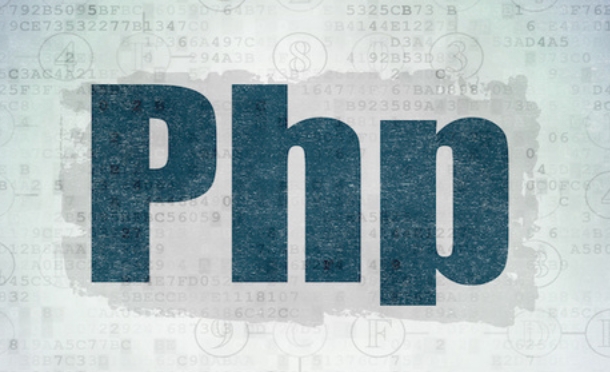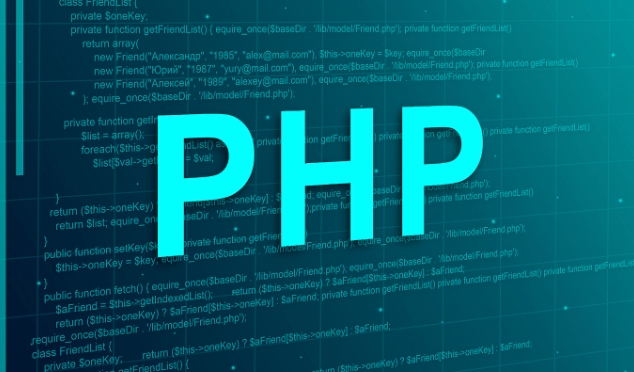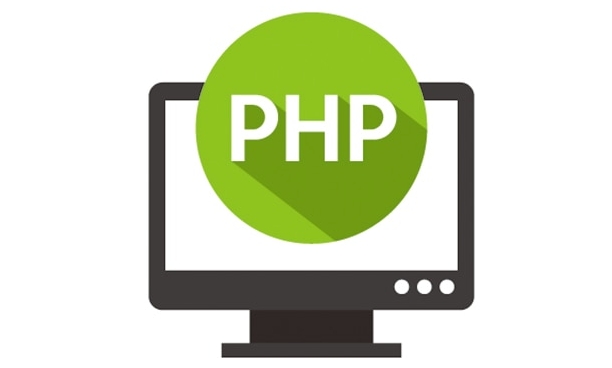 Backend Development
Backend Development
 PHP Tutorial
PHP Tutorial
 PHP environment configuration: debugging tools and extension installation
PHP environment configuration: debugging tools and extension installation
PHP environment configuration: debugging tools and extension installation
Jun 27, 2025 am 01:53 AMXdebug is the core tool of PHP debugging, and can be used to implement breakpoint debugging with the IDE; lightweight tools such as var_dump(), error_log() and Laravel's dd() are suitable for simple troubleshooting. Installation method varies according to system: Linux uses pecl or package manager, macOS uses brew, and Windows enables dll files. Key configurations include enabling error reporting, setting log paths, IDE port synchronization, and using browser plug-ins to assist debugging. Ignoring these details may cause debugging failures.

When configuring a PHP environment, the installation of debugging tools and extensions is an inescapable link. Many novices often get stuck at this step when building a local development environment: they don’t know which tools to install, how to install, and how to use them after installation. In fact, as long as you clarify your thoughts, this matter is not that complicated.

Recommended commonly used debugging tools
There are many debugging tools for PHP, but only those that are really practical. Xdebug is the most commonly used debugging extension. It can implement breakpoint debugging, stack trace and other functions in conjunction with IDEs (such as PhpStorm or VS Code). Another lightweight option is the built-in var_dump() and error_log() of PHP, which are suitable for simple troubleshooting.

If you want to view variable content visually, Laravel's own dd() function or Symfony's VarDumper component is also a good choice. Their outputs are clearer and the structure is easier to understand.
- Recommended combination:
- Xdebug IDE debugging
- VarDumper View variables
- Logging (
error_log()or Monolog)
Basic ways to install PHP extensions
The operation of different systems is slightly different when installing and extending. In Linux, pecl or package manager (such as apt and yum), brew can be used for macOS, and dll extension can be enabled through the php.ini file.

Taking Xdebug as an example, the following process can be used on Linux:
- Compile and install using
phpize(for manual compilation) - Or run
pecl install xdebugdirectly - After the installation is completed, modify
php.inito addzend_extension=xdebug.so - Restart the service to make the configuration take effect
If you are using integrated environments like XAMPP and WAMP, it usually comes with some common extensions, which you just need to uncomment in the configuration file to enable.
Note: The corresponding extension versions of different PHP versions may be different. Remember to confirm compatibility before installation.
Several key points in configuring a debugging environment
Whether the debugging environment is easy to use depends on whether the configuration is in place. The following points are easily overlooked, but are particularly important:
- Turn on error reporting : Make sure
display_errors = Onanderror_reporting = E_ALL - Set the appropriate log path : point
error_logto a writable file for easier subsequent troubleshooting - IDE sets the correct port : the default is 9003. If you have changed it, remember to adjust it synchronously.
- Browser plug-in assisted debugging : Some plug-ins can trigger Xdebug's remote debugging mode, such as Xdebug Helper for Chrome
Sometimes you have installed Xdebug, but it just doesn't work. It's very likely that these places are not paired.
Basically that's it. Don't underestimate these details, they determine whether you can quickly locate problems during the development process. Once configured, it will save you a lot of worry in the future.
The above is the detailed content of PHP environment configuration: debugging tools and extension installation. For more information, please follow other related articles on the PHP Chinese website!

Hot AI Tools

Undress AI Tool
Undress images for free

Undresser.AI Undress
AI-powered app for creating realistic nude photos

AI Clothes Remover
Online AI tool for removing clothes from photos.

Clothoff.io
AI clothes remover

Video Face Swap
Swap faces in any video effortlessly with our completely free AI face swap tool!

Hot Article

Hot Tools

Notepad++7.3.1
Easy-to-use and free code editor

SublimeText3 Chinese version
Chinese version, very easy to use

Zend Studio 13.0.1
Powerful PHP integrated development environment

Dreamweaver CS6
Visual web development tools

SublimeText3 Mac version
God-level code editing software (SublimeText3)

Hot Topics
 What are some best practices for versioning a PHP-based API?
Jun 14, 2025 am 12:27 AM
What are some best practices for versioning a PHP-based API?
Jun 14, 2025 am 12:27 AM
ToversionaPHP-basedAPIeffectively,useURL-basedversioningforclarityandeaseofrouting,separateversionedcodetoavoidconflicts,deprecateoldversionswithclearcommunication,andconsidercustomheadersonlywhennecessary.StartbyplacingtheversionintheURL(e.g.,/api/v
 How do I implement authentication and authorization in PHP?
Jun 20, 2025 am 01:03 AM
How do I implement authentication and authorization in PHP?
Jun 20, 2025 am 01:03 AM
TosecurelyhandleauthenticationandauthorizationinPHP,followthesesteps:1.Alwayshashpasswordswithpassword_hash()andverifyusingpassword_verify(),usepreparedstatementstopreventSQLinjection,andstoreuserdatain$_SESSIONafterlogin.2.Implementrole-basedaccessc
 What are the differences between procedural and object-oriented programming paradigms in PHP?
Jun 14, 2025 am 12:25 AM
What are the differences between procedural and object-oriented programming paradigms in PHP?
Jun 14, 2025 am 12:25 AM
Proceduralandobject-orientedprogramming(OOP)inPHPdiffersignificantlyinstructure,reusability,anddatahandling.1.Proceduralprogrammingusesfunctionsorganizedsequentially,suitableforsmallscripts.2.OOPorganizescodeintoclassesandobjects,modelingreal-worlden
 What are weak references (WeakMap) in PHP, and when might they be useful?
Jun 14, 2025 am 12:25 AM
What are weak references (WeakMap) in PHP, and when might they be useful?
Jun 14, 2025 am 12:25 AM
PHPdoesnothaveabuilt-inWeakMapbutoffersWeakReferenceforsimilarfunctionality.1.WeakReferenceallowsholdingreferenceswithoutpreventinggarbagecollection.2.Itisusefulforcaching,eventlisteners,andmetadatawithoutaffectingobjectlifecycles.3.YoucansimulateaWe
 How can you handle file uploads securely in PHP?
Jun 19, 2025 am 01:05 AM
How can you handle file uploads securely in PHP?
Jun 19, 2025 am 01:05 AM
To safely handle file uploads in PHP, the core is to verify file types, rename files, and restrict permissions. 1. Use finfo_file() to check the real MIME type, and only specific types such as image/jpeg are allowed; 2. Use uniqid() to generate random file names and store them in non-Web root directory; 3. Limit file size through php.ini and HTML forms, and set directory permissions to 0755; 4. Use ClamAV to scan malware to enhance security. These steps effectively prevent security vulnerabilities and ensure that the file upload process is safe and reliable.
 How can you interact with NoSQL databases (e.g., MongoDB, Redis) from PHP?
Jun 19, 2025 am 01:07 AM
How can you interact with NoSQL databases (e.g., MongoDB, Redis) from PHP?
Jun 19, 2025 am 01:07 AM
Yes, PHP can interact with NoSQL databases like MongoDB and Redis through specific extensions or libraries. First, use the MongoDBPHP driver (installed through PECL or Composer) to create client instances and operate databases and collections, supporting insertion, query, aggregation and other operations; second, use the Predis library or phpredis extension to connect to Redis, perform key-value settings and acquisitions, and recommend phpredis for high-performance scenarios, while Predis is convenient for rapid deployment; both are suitable for production environments and are well-documented.
 What are the differences between == (loose comparison) and === (strict comparison) in PHP?
Jun 19, 2025 am 01:07 AM
What are the differences between == (loose comparison) and === (strict comparison) in PHP?
Jun 19, 2025 am 01:07 AM
In PHP, the main difference between == and == is the strictness of type checking. ==Type conversion will be performed before comparison, for example, 5=="5" returns true, and ===Request that the value and type are the same before true will be returned, for example, 5==="5" returns false. In usage scenarios, === is more secure and should be used first, and == is only used when type conversion is required.
 How do I perform arithmetic operations in PHP ( , -, *, /, %)?
Jun 19, 2025 pm 05:13 PM
How do I perform arithmetic operations in PHP ( , -, *, /, %)?
Jun 19, 2025 pm 05:13 PM
The methods of using basic mathematical operations in PHP are as follows: 1. Addition signs support integers and floating-point numbers, and can also be used for variables. String numbers will be automatically converted but not recommended to dependencies; 2. Subtraction signs use - signs, variables are the same, and type conversion is also applicable; 3. Multiplication signs use * signs, which are suitable for numbers and similar strings; 4. Division uses / signs, which need to avoid dividing by zero, and note that the result may be floating-point numbers; 5. Taking the modulus signs can be used to judge odd and even numbers, and when processing negative numbers, the remainder signs are consistent with the dividend. The key to using these operators correctly is to ensure that the data types are clear and the boundary situation is handled well.





